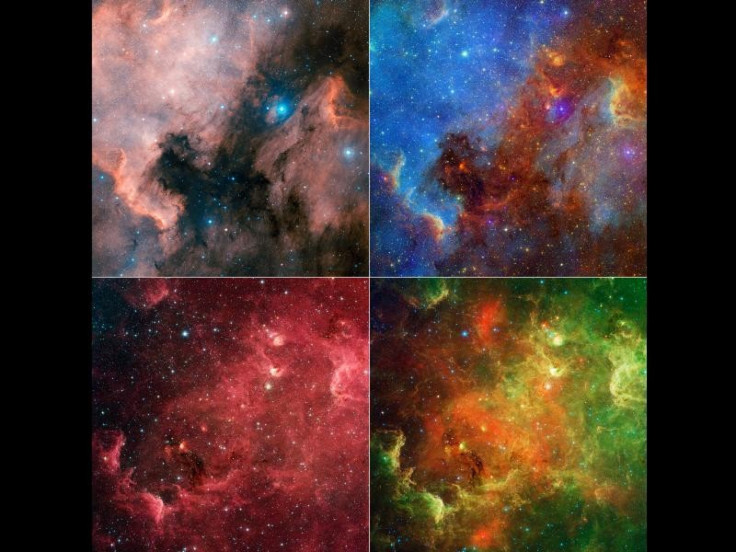NASA finds over 2,000 young star candidates in glowing nebula

A NASA team has identified about 2,100 young star candidates in a region called the North American Nebula. The nebula is named after its resemblance to the North American continent in visible light.
There were only about 200 young stars known before.
NASA's Spitzer Space Telescope has taken images of the new stars at all stages of development, from dusty little tots to young adults.
Young stars are hidden in visible-light images as they grow up surrounded by blankets of dust. NASA says dusty, dark clouds in the visible image become transparent in Spitzer's view. Also, Spitzer's infrared detectors pick up the glow of dusty cocoons enveloping baby stars.
One of the things that makes me so excited about this image is how different it is from the visible image, and how much more we can see in the infrared than in the visible, says Luisa Rebull of NASA's Spitzer Science Center at the California Institute of Technology, Pasadena, Calif. The Spitzer image reveals a wealth of detail about the dust and the young stars here.
According to NASA, clusters of young stars (about one million years old) can be found throughout the image. Slightly older but still very young stars (about 3 to 5 million years) are also liberally scattered across the complex, with concentrations near the head region of the Pelican nebula, which is located to the right of the North American nebula.
Larger scale mysteries are here too, such as involving North American nebula's power source. The Spitzer image hints that the missing stars are lurking behind the Gulf of Mexico portion of the nebula.
The nebula's distance from Earth is also a mystery. According to NASA, current estimates put it at about 1,800 light-years from Earth.
© Copyright IBTimes 2024. All rights reserved.





















